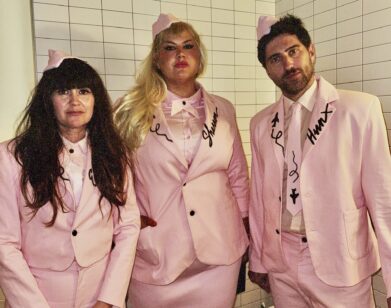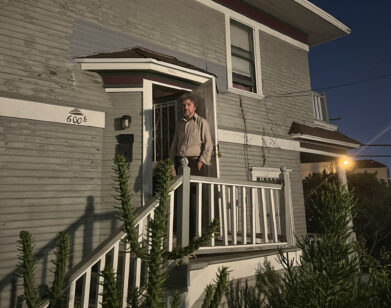Snacking Toward Bethlehem: A Culinary Odyssey Along L.A.’s Western Avenue
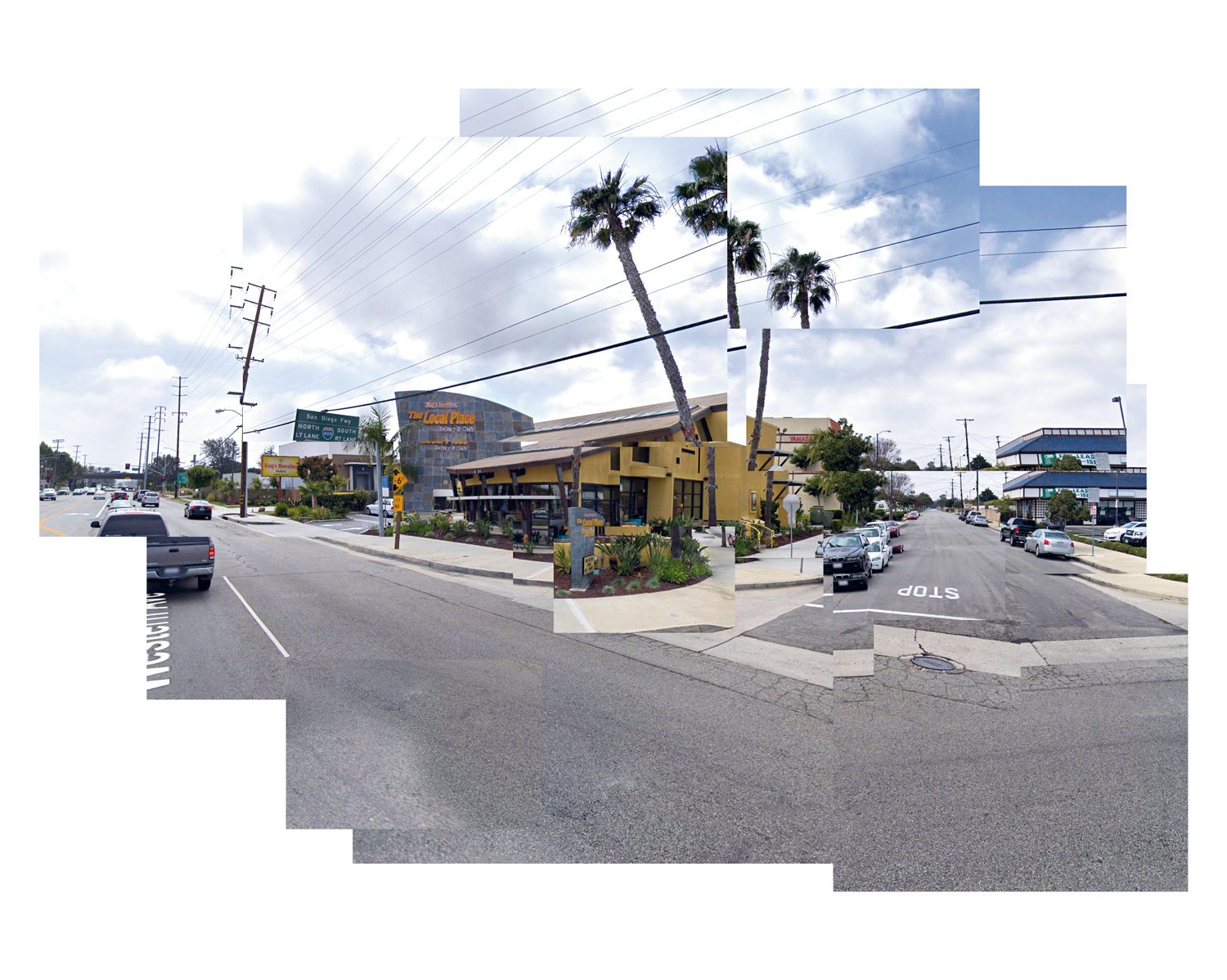
Western Avenue through the eyes of Google Street View.
More than 30 years ago, the late Pulitzer Prize–winning food critic Jonathan Gold set out to understand the sprawling food-scape of Los Angeles by stopping at every restaurant along Pico Boulevard for an entire year. With only five days and $200 in her pocket, the food writer Tien Nguyen restaged this mission all the way up Western Avenue. Gold, it should be said, never made it to the end.
Western Avenue generally lies far from the critics’ lists, blogger round-ups, or Instagram foodie expeditions. While Los Angeles as a whole basks in its newfound status as an international culinary Mecca (the Michelin Guide, after a decade hiatus, returns to the city this year), Western is busy fending off—or enjoying, depending on who you ask—fierce gentrification in the predominantly immigrant communities that exist along the avenue. Beginning from the port of San Pedro at its southern edge and motoring up to Thai Town in the north, you can discern whether you’re in Little Salvador, Little Belize, Little Armenia, or any of the other national microcosms that dot the boulevard by towering strip mall signage. But where does one even begin?
———
MONDAY
Sorrento’s Pizza House is a true–blue red sauce joint first opened in 1962, and the crowd remains strictly local. As I walked in at midday, a woman across from me gasped as she spotted a long-lost acquaintance across the dining room. At the server’s recommendation, I ordered the spaghetti lunch special: spools of pasta doused in a sweet marinara sauce and served with a shelf of garlic bread as long as my arm. As I got up to leave, the server, too, spotted a long-lost friend of her own. “Can you believe this?!” she said. (You could.)
A few doors down from Sorrento’s lies the Chinese takeout spot Nim Chan’s Kitchen, which you can find a clone of in countless strip malls across L.A. There was a tip jar fashioned from an empty plastic jug of lychee candy, and the dining room was peppered with a handful of stiff, plastic chairs. The photo menu posted on the wall included kung pao chicken and beef and broccoli, and where some might have a dish called General Tso’s chicken, Nim Chan’s, perhaps intentionally, avoided attribution altogether, opting for “General chicken.” A lunch combo plate of lo mein and General chicken cost less than $7, and the sauce didn’t weigh down the chicken. The lo mein even had a nice bite to it.
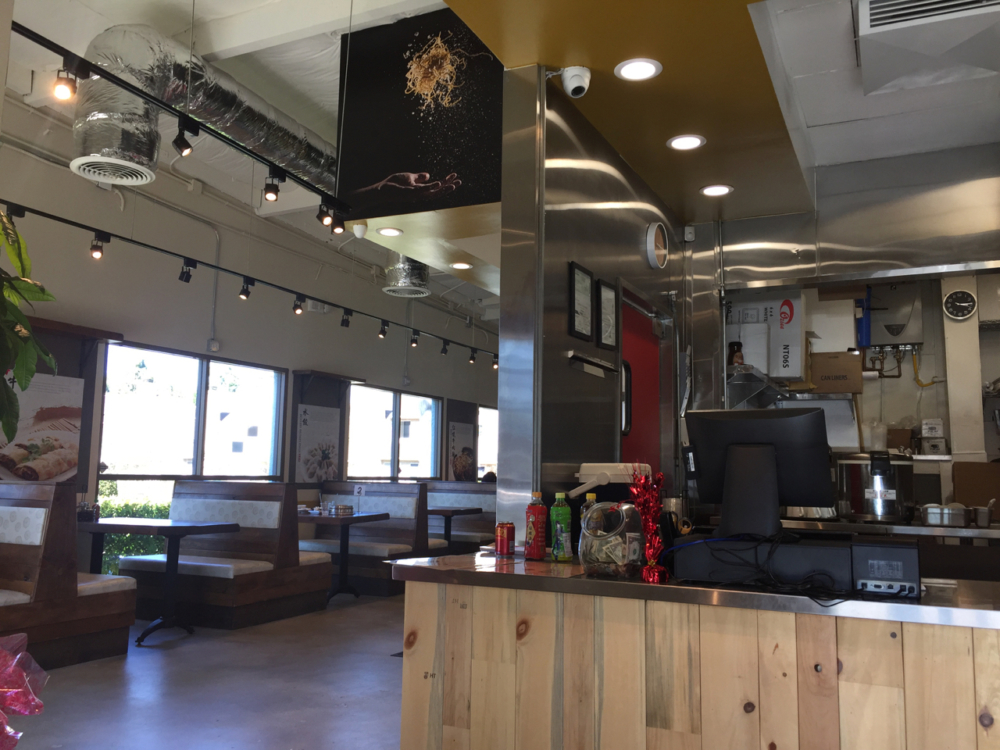
Northern Café. All photos courtesy of the writer.
Back-to-back strip mall lunches mandate an afternoon break, which I didn’t take thanks to stumbling upon the new Northern Café. Congratulatory balloons floated near the entrance. The wood floors were unscuffed and the tables not yet marred by chili oil stains. On impulse, I ordered a steam basket full of handmade pork dumplings along with dan dan noodles thick as shoelaces and glued together with a numbing sesame sauce. These Taiwanese and Sichuan specialties were once uncommon dishes outside the Chinese and Taiwanese enclaves of the San Gabriel Valley. How were the locals responding? “Excited,” my server told me. Excitement on Western Avenue, I realized, can be the sound of hoards slurping xiao long bao too busily to even talk with one another.
At Fukuno, I was greeted by one earnest server and ignored by a Kappo chef who prepared the sushi, grilled the skewers, and tended to whatever was boiling in the pot with the ease of someone who juggles chainsaws for a living. No one bothered with the menu at Fukuno. Diners either knew it offhand, or ordered from a sheet of specials written entirely in Japanese. As far as I could tell, this strip mall eatery was frequented by an almost exclusively Japanese and Japanese-American clientele. After all, this part of Western Avenue once served as a home for Toyota’s 110-acre headquarters for five decades, and you can spot the shadow of the company’s logo on many buildings. At the counter, I pointed to battera sushi—sushi with the rice pressed into bricks the size of a giant Lego and topped with a thin sliver of mackerel that delivered a punch of umami far greater than I expected—and the most popular item, squishy tuna meatballs marinated in a vinegary sauce. As I indulged, a voice from down the counter announced he had over-ordered and passed down a bowl of gently steamed acorn squash to share. I couldn’t say no.
———
TUESDAY
The scene at Mr. Fries Man—a parking lot crammed with Subarus, Toyotas, and Cadillacs—was drenched in ’90s R&B, with kids at tables gripping French fries in shirts stained with buffalo sauce. The mood was slightly sullen. Two weeks prior, the activist and rapper Nipsey Hussle had been killed, and this was one of several local businesses that skyrocketed to fame after he had Instagrammed it. I overheard “The marathon continues” more than once while waiting in line, a reference to one of Nipsey’s mixtapes and now a rousing call to continue investment in the community. I was directed to order the fries loaded with lemon garlic shrimp and snow crab, and gleaned quickly that fries, here, are just a vessel to ferry other ingredients into one’s mouth. They were hot and crispy—an Olympic feat given how heavily they were doused in tangy sauce, cheese, shrimp, and crab. No person should eat this meal alone, but on that day, it was my sole task. I have no regrets.
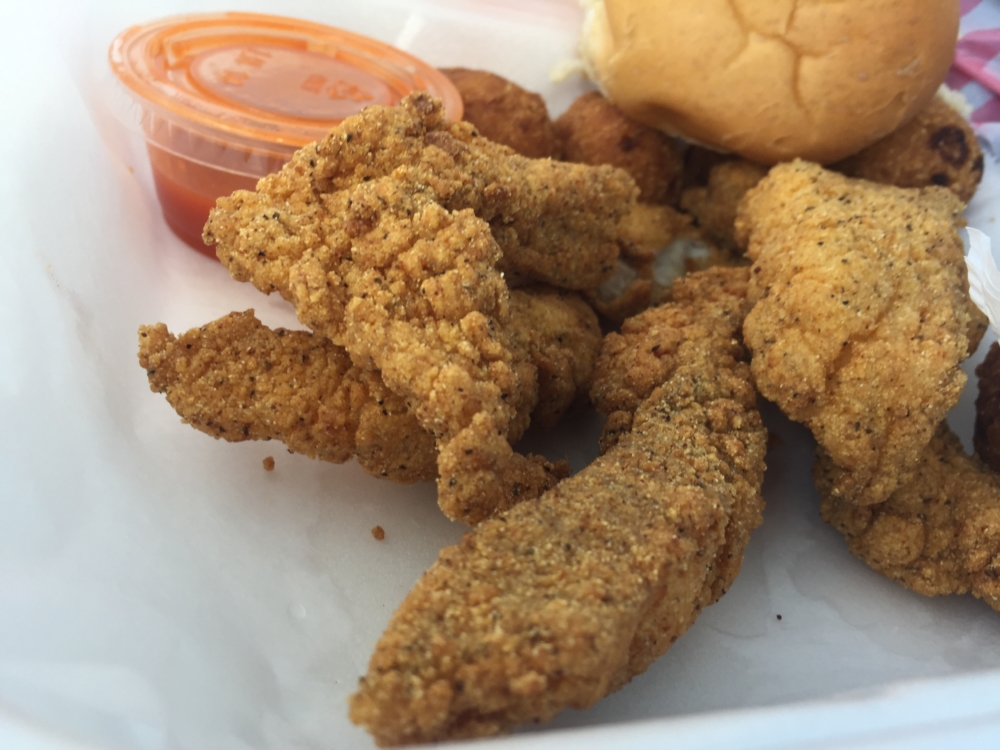
CW & Chris Fish and Chicken.
There was once a row of empty storefronts along the stretch of Western than runs through this south L.A. neighborhood, but now businesses are trickling back. CW & Chris Fish and Chicken caught my eye with a faded blue banner announcing its 25 years in operation. Inside, two tables are presided over by a white wall decorated with autographed jerseys from the NFL player Lenzy Pipkins (“To Uncle Chris”) and the USC star Anthony Davis (signed “Notre Dame Killer”). My order of catfish and hush puppies was ready about 15 minutes after I placed it through a thick glass window. The hush puppies were studded with unexpected bits of chopped jalapeños, and the catfish had the taste of hot, clean oil and a properly salted, seasoned batter.
A black-and-white checkered floor announces the “homey” feeling at M’Dears, a bakery and bistro run by a family with roots in Louisiana. I visited just after noon, along with a few men in suits talking business over their biscuits and coffee at an L-shaped counter. A wide variety of solid soul food classics are on offer here, plus some distinctly L.A. options, including a “soul food burrito” with fried chicken, red beans, and rice. After ordering the oxtail, I was informed a few minutes later that the kitchen was fresh out. I made do with a pork chop smothered in gravy, along with a sweet potato waffle. Mid-meal, a generous mea culpa was offered for the oxtail mix–up: flaky angel biscuits with peach cobbler preserves.
There is a special subgenre of Los Angeles eating that centers on walk-up burger stands outfitted with erratic menus that span multiple cuisines and stellar artwork (in the case of Master Burger, a mural of Martin Luther King Jr., Barack Obama, and Malcolm X). They tend to offer not just burgers, but burgers topped with pastrami or chili alongside tacos and teriyaki bowls. Seeking restraint after two meals of comfort food, I opted for a junior cheeseburger; with the exception of a fearless woman who ordered carne asada fries, it seemed like the item du jour in each customer’s hands. I was given a hulking, massive patty that belied any concept of “junior” proportions. Hand-formed and expertly seasoned, it had been smashed on the griddle to yield the kind of sear one finds in commercials. It was nearly rush hour, so I didn’t linger upon completion, but I couldn’t even if I wanted to: There are no tables or chairs here.
———
WEDNESDAY
Among the you-buy-we-fry joints, the burger stands, and the pupuserías dotting Western’s midsection are a number of Central American eateries in an area unofficially known as “Little Belize.” It’s where I found Ella’s Belizean Market. A photo of Barack Obama greeted me upon entering, along with three tiny tables dressed in tablecloths patterned with “You better Belize it!” Through a tiny portal, I ordered the “dry fry” fish served with red rice and gravy—a whole red snapper dried, seasoned, and fried, then kicked up with acidity and brightness by a wedge of lime. As I ate, another customer was picking up a dinner of stewed chicken for her son. “If it were just me,” she added. “I’d get the oxtails.”
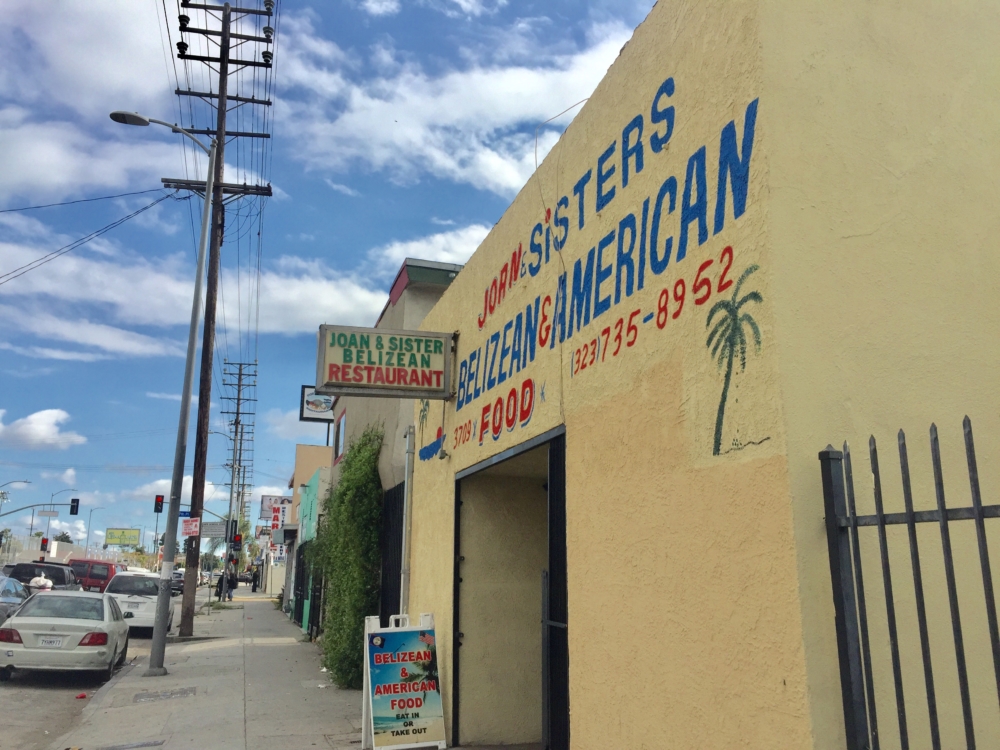
Joan and Sisters Belizean Restaurant.
At Joan and Sisters Belizean Restaurant, I found another presidential photo, this time of Barack and Michelle Obama, together, in a frame above the register. Joan and her sisters have been preparing Kriol dishes for nearly 30 years. A friendly server working a large and mostly empty dining room didn’t mind me taking my time with the menu. The place was every bit as relaxed and easygoing as it was frantic and anxious outside; afternoon traffic on Western had already started to snarl to a standstill. As I looked on, a comforting and hefty plate of stewed chicken was delivered. It was burnished a deep orange from recado (achiote paste) and required not more than a nudge to tug the meat off the bone. If you’ve never had Belizean food before, this would be your gateway dish. It’s not uncommon, I was told, for a fanatic to come straight from LAX to get their chicken fix or to down a bowl of Joan’s most popular item: the oxtail stew.
Right past the exit to Interstate 10 is another strip mall with a rather large sign. Below “Nails,” next to “London Optical,” and above “Water” and “Deportes” was a spot listed only as “Ethiopian Restaurant.” That was all I needed to pull into the mall. Palm Grove Ethiopian was cozy enough to fit three mesobs plus a handful of tables. The veggie special I ordered came with a symphony of lentils, collards, and other vegetables on injera made with organic teff. Soon after I got there, a couple and their child, still in diapers, wandered in and debated where they should sit, finally settling at a mesob before cracking open the menu. I left just as the server was walking them through their options. “The doro wat,” I heard him say, “is made with organic chicken.”
———
THURSDAY
By the time I stumbled upon this pupusería, I felt like I had filled my quota of strip mall eateries. And yet, I wandered in precisely because of its location, on the corner of Pico and Western. Texis Restaurant was founded in the late 1980s, just after Jonathan Gold’s initial Pico pilgrimage, and I imagined that if Texis were on the boulevard at that time, he would have been lured in by its flashing pink neon sign in the window. The restaurant’s tablecloths were sticky from someone’s wayward bits of curtido, the pickled cabbage slaw that cuts through the richness of the pupusa. In the quiet of a late afternoon, the only diner present hunched over a plate of eggs and sausages. The cook behind the counter tugged at a pale yellow mound of masa and rolled a palmful into a ball as she called out her recommendation: pupusa con chicharrón y queso. I listened to the gentle pat pat pat of her pressing out the masa and folding in the pork and cheese, followed by the sizzle of the pupusa as it hit the hot griddle. It cooked in a matter of minutes and was finished off in an even shorter amount of time.
Pollo a la Brasa, a Japanese-owned Peruvian rotisserie joint, has its own stockpile of wood outside the building, which, I learned upon entering, fuels an oven that houses rows and rows of neatly bundled birds roasting in a slow circle. How many go out the door and into Koreatown’s streets each day? “Oh, hundreds,” said the cashier, who handed me a quarter plate of smoky, garlicky chicken with a crisped, bronzed skin. A searing aji sauce was highly suggested, and each table stockpiled gallons of it, as if to calm a paranoia that the restaurant could run dry at any moment. Everyone inside—the cops, the construction workers, the Korean businesspeople, and the one stray college student—would leave smelling faintly of smoke and garlic.
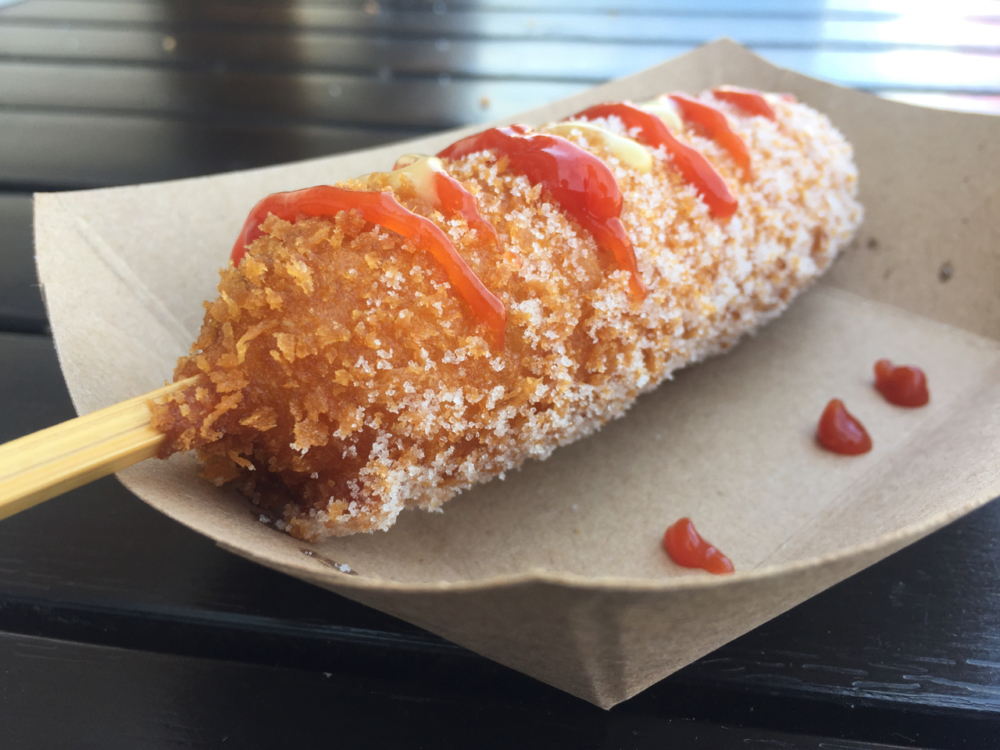
Myungrang Hot Dog.
The stretch of Western that runs through Koreatown is dense with lines forming seemingly everywhere: at Monty’s Good Burger, a new establishment that caters to millennials who crave Impossible 2.0 patties in Instagrammable settings; or at Younggoo’s Naju, for bowls of restorative oxtail soup. But the longest and most boisterous line belongs to Myungrang Hot Dog, a South Korean export that opened in 2018. The corn dogs are battered and fried fresh in batches, and are limited to five per order (to streamline things). Still, the line felt excruciatingly slow. Despite the option to modify your corn dog with squid ink–laced batter, my order was relatively platonic: The Original. “Good for your first try,” said my happy cashier. It was rolled in sugar just before it was handed off. The batter was crunchy with a chewiness that suggested rice flour. It was good for my first try. And had I had the patience, it would’ve merited a second.
Jun Won is new to Western Avenue, but not new to Koreatown: Jung Ye Jun opened the restaurant 25 years ago just off the avenue, offering seafood dishes from her hometown province of Chungcheongnam-do. Three years ago, it was sold to make way for a seven-story apartment building, thus forcing the move to the strip mall where it now resides. “Things do change. Time-wise. Economy-wise,” said Jung Ye’s son, Jeff, who now runs things. He came by my table as I packed up my leftovers: thick slices of braised black cod on slabs of daikon and squat tubes of squid. Jeff listed some of the moving pains: parking issues (not everyone likes the $2.50 valet fee) and the fact that the dishes didn’t taste quite the same as they had before the transition. With his mother back in the kitchen, the flavors are right again, he said. “They’re even better than before, maybe.” Customers are returning, and on this weeknight, groups of twentysomethings filled tables alongside gregarious men with ties whipped behind their necks, safe from the gochujang splatter.
———
FRIDAY
Much of the action at this strip mall in Thai Town caters to backward-hat wearing bros chasing Nashville-style hot chicken, L.A.’s latest food craze. After cutting through a line that snaked out into the parking lot, I entered the placid Vim Thai. Far less busy, I saw only a few families devouring platters of pad thai, bowls of boat noodles, pineapple fried rice, and papaya salads. The original Vim opened just a few blocks away in 1980, and this location, with its sleek wood tables and a coat of vibrant red paint, is new to Western. The menu is in English, Thai, and Spanish, making it friendly to almost everyone who lives or works in the neighborhood. My order of thin slices of chicken tossed with chili and mint leaves (“pollo con chile verde, ajo y hojas de menta”) could have easily fed two, and necessitated a Thai iced tea due to its high level of heat.
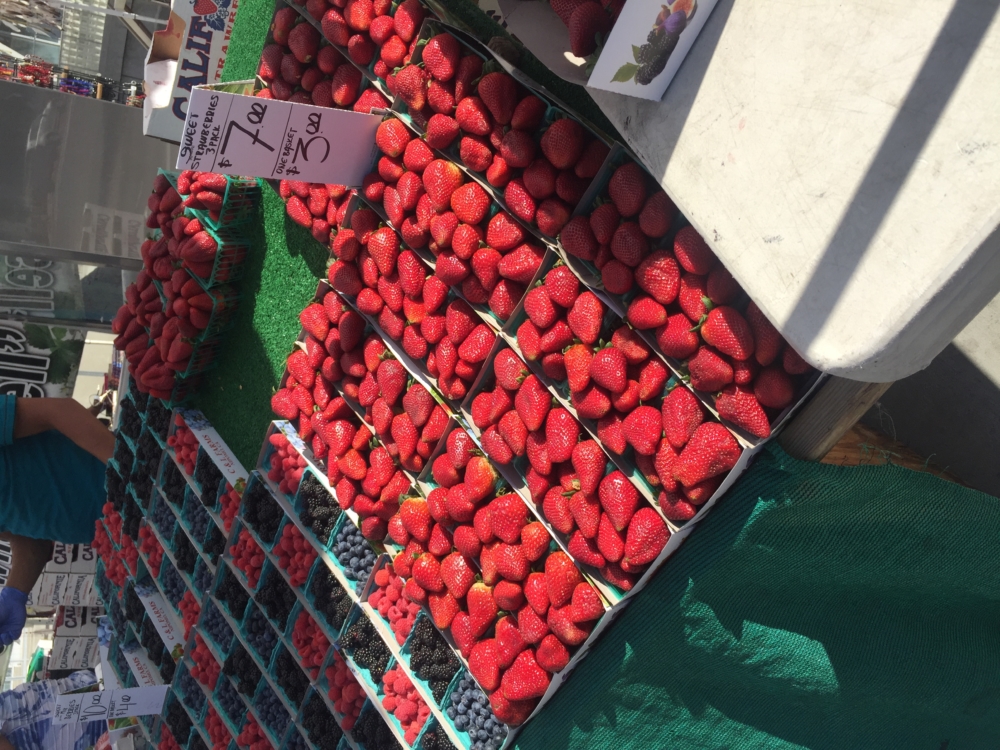
East Hollywood Farmer’s Market.
Tables overrun with ripe and unripe avocados, bundles of kale, and bulbs of garlic with roots still attached were the first things I discovered upon entering The East Hollywood Certified Farmers Market at the corner of Western and Hollywood. It’s an open-air hub for Armenian, Thai, and Latino families in the area. Among the half-dozen vendors, one farmer offered baskets of first-of the-season strawberries, while other stalls burst with citrus. “Very sweet!” said one farmer at Victor Gonzalez Farms as she handed me a thick slice of a Valencia orange to sample. The space will soon open a food hall called the Thai Town Marketplace. “It’s basically to help low-income entrepreneurs start their own businesses,” said the market’s sustainability and integration coordinator as she swiped a shopper’s state benefit card and gave her vouchers to use. Perhaps more than any other neighborhood on Western, Thai Town has recently become the target of zealous developers. Just a few blocks south, I walked by a new apartment building advertising “large luxury residences” for lease. The marketplace will be an opportunity for vendors to start their business with low rents. After three years in the food hall, the thinking goes, the vendor will have built enough capital to go off on their own. “That’s how we’re battling gentrification,” she said. “We’ll see how it goes.”

